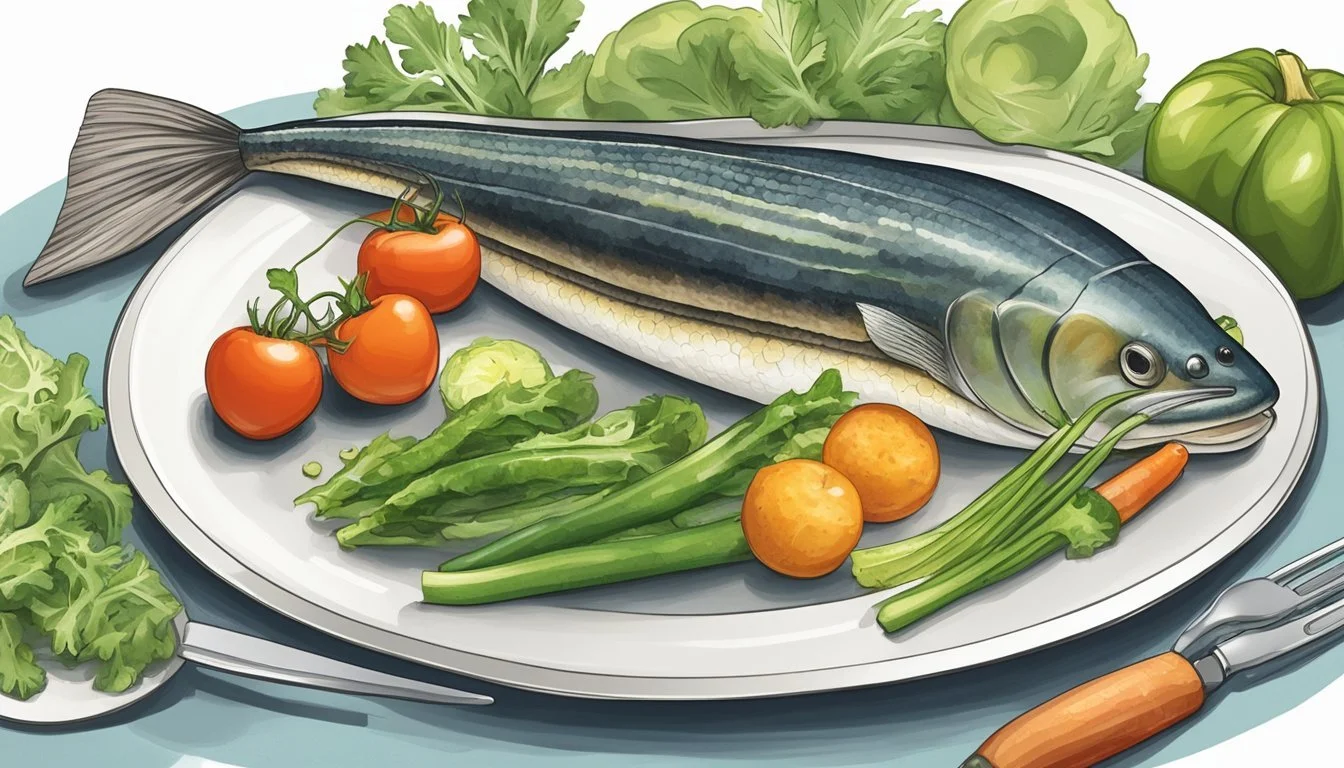Can Diabetics Eat Eel?
Exploring Dietary Considerations
Eel is a unique seafood option that brings various nutritional benefits to the table, but can diabetics eat eel? For individuals managing diabetes, food choices play a crucial role in maintaining stable blood sugar levels and overall health. Eel, particularly when prepared as sushi, offers a delightful combination of flavors and nutrients.
One of the critical concerns for diabetics is controlling their carbohydrate intake. Eel itself is low in carbs, making it generally a suitable option for those with diabetes. The nutritional profile of eel includes high-quality protein and essential fats, which can aid in blood sugar management by improving insulin sensitivity.
While eel is nutritious, preparation methods and portion control are key. Grilled and marinated eel used in sushi typically contains about 50 calories and only 4.7 grams of carbohydrates per piece. This makes it a relatively diabetes-friendly choice when consumed in moderation, allowing diabetics to enjoy a delicious and health-conscious meal.
Understanding Diabetes and Dietary Restrictions
Managing diabetes effectively requires careful dietary planning. This involves balancing blood sugar levels through the right selection of foods, which can impact insulin resistance and overall health.
Importance of Diet in Diabetes Management
Diet plays a crucial role in controlling diabetes. Individuals need to monitor their intake of carbohydrates since these directly affect blood sugar levels. Consuming foods with a low glycemic index can help stabilize blood glucose. Additionally, a balanced diet supports weight management, which is essential for reducing insulin resistance associated with type 2 diabetes.
Incorporating non-starchy vegetables, lean proteins, and healthy fats can prevent sudden spikes in blood sugar. Regular meals and snacks help maintain consistent energy levels.
Foods to Avoid and Select for Diabetics
To manage diabetes, it is important to avoid foods that cause rapid increases in blood sugar. Some items to limit include:
Sugar-sweetened beverages like soda and sports drinks.
Packaged pastries and refined grain products such as white bread.
Processed meats including hot dogs and sausages.
Instead, diabetics should opt for:
Non-starchy vegetables (e.g., broccoli, spinach).
High-fiber options like whole grains.
Lean protein sources, such as fish, poultry, and nuts.
Healthy fats from sources like avocado and olive oil.
Diabetes management also benefits from including omega-3 rich fatty fish such as salmon and mackerel, which help improve overall heart health.
Overview of Seafood Nutrition
Seafood is rich in essential nutrients, providing significant health benefits. It is noted for its high protein and beneficial fat content but also carries risks from mercury and other contaminants.
Health Benefits of Seafood
Seafood is a valuable source of omega-3 fatty acids, which support heart health and reduce inflammation. Omega-3s contribute to lowering the risk of heart disease and improving mental health.
Many types of seafood are also rich in vitamins and minerals such as vitamin D, B vitamins, iodine, and selenium. These nutrients play a crucial role in maintaining bone health, supporting the immune system, and promoting overall bodily functions.
Protein and Fat Content in Seafood
Seafood offers a lean source of protein, which is essential for muscle growth and repair. Cod, for example, contains 32.6 grams of protein per small fillet. Protein is crucial for those with diabetes, as it helps regulate blood sugar levels.
The fat content in seafood varies by type. Fatty fish like salmon, mackerel, and sardines are high in omega-3 fatty acids, beneficial for heart health. Eel, often enjoyed in sushi, has a balanced profile of protein and fat, offering 50 calories and 4.7 grams of carbohydrates per piece.
Mercury and Other Contaminants in Seafood
While seafood is nutritious, it's important to be aware of potential contaminants. Mercury is a significant concern, particularly for larger fish like swordfish, shark, and king mackerel, which accumulate more mercury in their tissues.
Pregnant individuals and children should particularly monitor their seafood consumption to limit mercury exposure. To avoid high levels of mercury, opting for safer choices like salmon, shrimp, and cod is recommended. These options provide the benefits of seafood without the higher risk of contaminants.
Eel as a Food Choice for Diabetics
Eel can be a part of a diabetes-friendly diet due to its rich nutritional profile and the potential health benefits it offers. However, it's essential to consider portion control and some health risks when including eel in one's diet.
Nutritional Profile of Eel
Eel is rich in omega-3 fatty acids, which contribute to heart health by reducing inflammation and lowering triglyceride levels. It provides a good amount of protein, essential for muscle repair and maintenance.
Eel contains vitamins and minerals like vitamin A, vitamin E, and zinc which support immune function and skin health. It is low in saturated fat, making it a healthier choice compared to other high-fat protein sources. Here’s a nutritional snapshot per 100 grams of eel:
Nutrient Amount Protein 18.4 grams Omega-3 Fatty Acids 0.9 grams Saturated Fat 2.5 grams Vitamin A 800 IU Vitamin E 1.8 mg Zinc 1 mg
Eel in the Context of Diabetes-Friendly Diets
For individuals with diabetes, choosing foods with a low glycemic index is crucial. Eel has a low glycemic index, meaning it won't spike blood sugar levels rapidly. Its omega-3 fatty acids can help improve insulin sensitivity, benefiting glucose metabolism and potentially aiding in blood sugar control.
It's advisable to consume eel in moderation due to its high-calorie content. Including eel in balanced meals with non-starchy vegetables and whole grains can further support stable blood sugar levels. Eel's rich protein content can also help curb hunger, aiding in weight management.
Potential Risks and Considerations for Diabetics
Despite its benefits, eel should be consumed with caution. The declining eel population has led to sustainability concerns and higher prices. This can affect availability and cost, making it less accessible for regular consumption.
Eel can sometimes have higher mercury levels, which necessitates portion control and moderation to avoid potential health risks. People with diabetes should ensure their overall diet is balanced and consult with healthcare providers before making eel a regular part of their meals.
Awareness of these factors can help make informed decisions about including eel in a diabetes-friendly diet.
Incorporating Eel into a Diabetic Diet
Eel can be a nutritious option for people with diabetes when prepared and consumed carefully. Attention should be given to preparation methods, portion sizes, and the inclusion of other seafood options.
Safe Preparation of Eel
Cooking methods significantly influence the health benefits of eel for diabetics. Grilling, baking, or steaming are healthier options, as these methods do not add unnecessary fats and preservatives. Avoid frying eel, as it can increase calorie intake and add unhealthy fats, which are detrimental to blood sugar control.
Season eel with herbs, spices, and lemon juice instead of sugary sauces or marinades. Cooked fish should reach an internal temperature of 145°F (63°C) to ensure it is safe to eat.
Portion Sizes and Frequency
Adhering to appropriate portion sizes is crucial. A typical serving size for eel is about 3 to 4 ounces. Portion control helps manage caloric and carbohydrate intake, which is vital for managing blood sugar levels. Eating eel once or twice a week is sufficient to gain its nutritional benefits without overconsumption.
Alternating eel with other low-mercury fish like salmon, mackerel, trout, and sardines can provide a balanced diet rich in omega-3 fatty acids. These fish are beneficial in controlling blood glucose and improving insulin sensitivity.
Alternative Seafood Options
While eel can be a healthy addition to a diabetic diet, incorporating a variety of other seafood options ensures a balanced intake of nutrients. Salmon, mackerel, tuna, sardines, trout, shrimp, and shellfish are excellent alternatives, each offering unique health benefits.
For instance, salmon is high in omega-3 fatty acids and vitamin D, both of which support cardiovascular health. Shrimp and shellfish are low in fat and calories, making them suitable for maintaining a healthy weight.
In conclusion, diversifying seafood choices helps cover a broader spectrum of nutrients while keeping blood sugar levels stable.
Culinary Traditions Involving Eel
Eel has found its way into several culinary traditions worldwide, with Japanese cuisine being particularly renowned for its eel dishes. These dishes often feature a variety of preparation methods and distinct flavors that highlight the versatility of eel as an ingredient.
Eel in Japanese Cuisine
In Japan, eel is a celebrated delicacy, commonly enjoyed in dishes like unagi (grilled eel) and anago (saltwater eel). Unagi is often served as nigiri sushi or atop a bed of rice in a dish called unadon. It is typically glazed with a sweet soy-based sauce, enhancing its rich flavor.
Miso soup and tempura are other methods of preparing eel in Japanese restaurants. Eel can be found in more complex sushi rolls such as uramaki and the popular California roll, which often incorporate eel for its unique taste.
Eel's texture and flavor profile make it a versatile ingredient, lending itself well to various Japanese dishes. Its rich, buttery taste complements the subtler flavors of rice and vegetables, creating a harmonious balance in every bite.
Practical Tips for Diabetics
When it comes to enjoying eel, it's essential for diabetics to make informed choices both when dining out and preparing meals at home. Here’s how to do it smartly and healthily.
Navigating Dining Out and Eel Dishes
Dining out can be tricky for diabetics. Eel is often featured in Japanese cuisine, such as sushi, sashimi, and maki rolls. For a healthier option, choose sashimi or nigiri sushi, which combines a piece of eel on top of rice. This limits the intake of refined carbs.
Avoid eel dishes that are covered in sweet sauces high in sugar. Instead, ask for less sauce or use low-sodium soy sauce sparingly. Pair eel dishes with a side salad or steamed veggies like asparagus or beans to add fiber and nutrients. Swap out high-carb rolls for those featuring avocado, cucumber, or other vegetables wrapped in nori (seaweed).
Making Diabetes-Compatible Eel at Home
Preparing eel at home allows better control of ingredients. Choose recipes that avoid excessive sugars and salts. Grilled eel can be seasoned with a light glaze of vinegar and soy sauce, opting for low-sodium versions.
Accompany eel with vegetables like asparagus, beans, or salad to enhance the meal's fiber and vitamin content. Making a homemade eel maki roll? Use brown rice for added fiber, and fill with avocado and cucumber. A touch of wasabi adds flavor without extra carbs.
Healthy fats from avocado and fiber from veggies help maintain stable blood sugar levels. Balancing these meals provides satisfying and diabetes-friendly options.
Additional Considerations for Older Adults with Diabetes
Older adults with diabetes often face unique challenges related to nutrition and disease management. Special attention needs to be paid to dietary needs, given the higher rates of malnutrition and other age-related conditions in this group.
Special Dietary Needs of Older Diabetics
Older adults with diabetes should consume a balanced diet rich in nutrients like calcium and vitamin D to support bone health. This group must focus on heart-healthy options to manage cardiovascular risks. Incorporating high-protein foods helps maintain muscle mass, which can be a concern as people age.
Low-calorie diets can help manage weight, which in turn can improve blood sugar levels. They must also be cautious with carbohydrate intake to avoid spikes in glucose levels. Due to a higher risk of malnutrition, regular nutritional assessments are crucial.
Consider using unsaturated fats instead of saturated fats and increasing the intake of fiber through vegetables and whole grains. Fluid intake should also be monitored to prevent dehydration. Regular consultations with healthcare providers can help tailor individual dietary plans to meet their specific needs.








